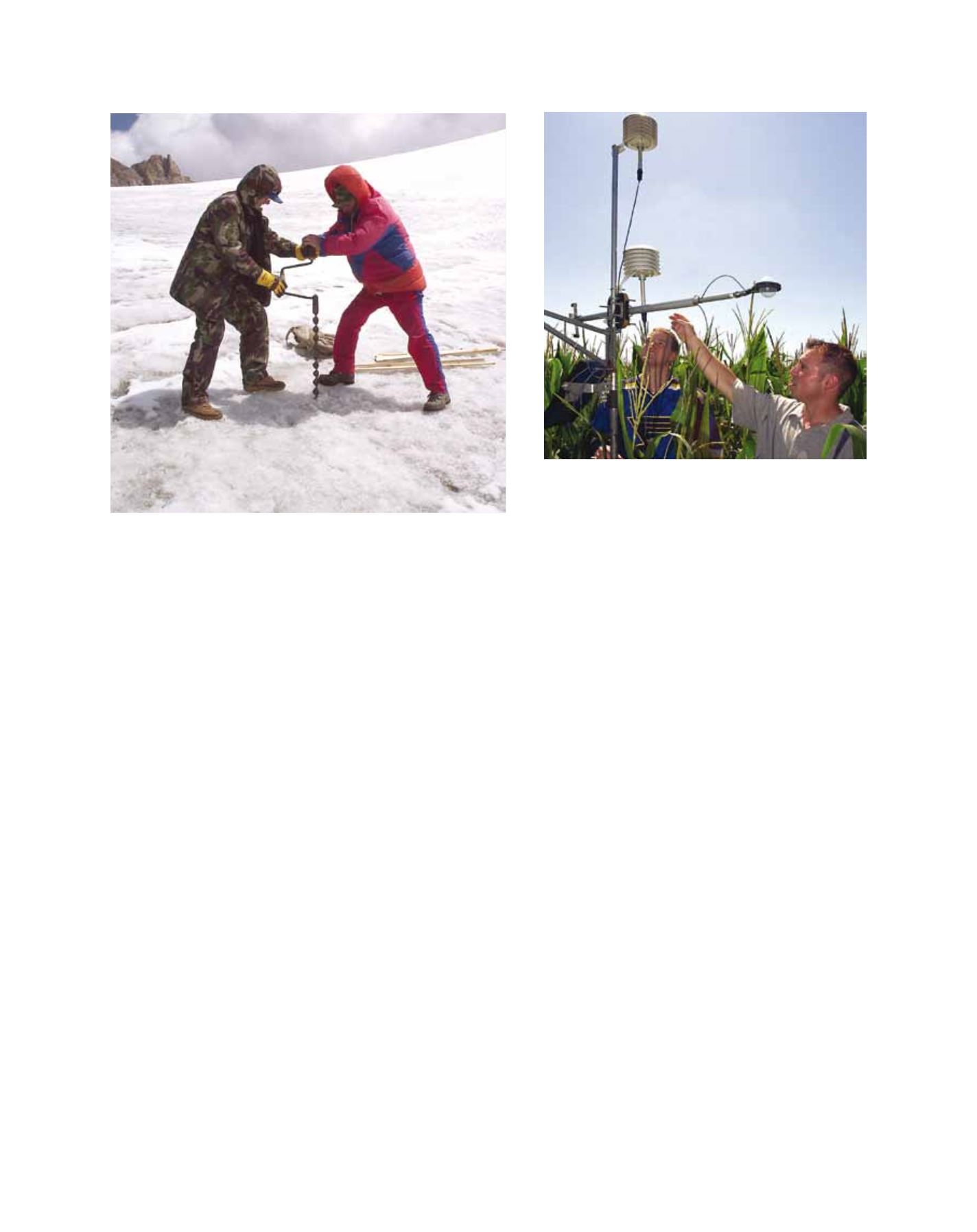

[
] 12
the next decade, or the next century) in Beijing will probably be
warmer (or colder) than average. They do this by studying large-
scale and long-term processes, such as the Earth’s orbit, long-term
solar radiation cycles, deforestation and other changes in land cover,
ocean temperatures and currents, and greenhouse gas emissions.
Their main tools are observations of today’s climate, studies of past
climates, and computer-based modeling of climate processes.
Certain regions of the global atmosphere are strongly affected
by sea-surface temperatures and other slow-changing variables.
Researchers have demonstrated that interactions among the atmos-
phere, oceans and land surface can produce fluctuations that are
potentially predictable, and that this makes it possible to predict
the climate at seasonal and interannual timescales. The most well
understood fluctuation is known at the El Niño/Southern Oscillation
(ENSO), which is linked to interactions between the atmosphere
and the ocean in the tropical Pacific Ocean. Just like the advances in
weather prediction, these advances in climate prediction have been
made possible by steady improvements in observations and models.
While climate forecasters are demonstrating an ability to predict the
average weather of the next season or the next year over a broad area,
they cannot fine-tune the weather forecast for Week 6 in a specific
locale. Nevertheless, knowing that there is a high probability that the
coming monsoon season will have low, average or high rainfall can
help farmers and energy and water suppliers, for example, to plan
their activities. Similarly, while individual hurricanes, typhoons and
other tropical disturbances cannot be predicted beyond a few days in
advance, the provision of probabilities for the future tracks, numbers
and intensity of such storms would be extremely beneficial to society.
Concern about climate change is also helping to drive research
into the climate system and climate forecasting. The evidence avail-
able to scientists – from ice cores and other residues of ancient
climates to 21st century satellite measurements and sophisticated
models run on supercomputers – has grown exponentially. Thanks
to these advances, the level of confidence scientists now
have in their understanding of the global climate system
is ‘very high’ – defined by the IPCC as being at least a
nine in ten chance of being correct.
The scientific method that has made this progress
possible is one of humanity’s most impressive cultural
achievements. By gathering and analyzing evidence,
developing hypotheses and designing experiments to
test them, scientists have unlocked many of nature’s
most closely held secrets. The spirited debate amongst
competing theories and research teams reflects the vital-
ity of this search for a better understanding of climate
variability and climate change.
Climate services
Seasonal to multiyear climate forecasts are increas-
ingly being used to generate actionable information
for decision-making on disaster risk reduction, public
health, agriculture, fisheries, tourism, transport, and
other weather and climate-sensitive sectors. A growing
number of governments are building on their experience
in weather forecasting to customize climate information
and target it to specific users. These climate services
make it possible to incorporate science-based climate
information and prediction into planning, policy and
practice to achieve real benefits for society
Climate services often involve integrating climate
information with information from other sectors. This
requires close collaboration between agencies and
experts from different fields. The resulting information
must then be presented to users in formats that they can
understand. When presenting information in the form
of probabilities, climate service providers must take
Pre-drilling of ablative measuring rods: Uzbekistan Hydro-meteorological Service
Image: George Tarbay, NIU
Students in meteorology at Northern Illinois University, monitor air
temperatures and humidity at a weather station in a DeKalb cornfield.
The students worked on research showing trends in northeast
Illinois dew-point values
Image: Uzbekistan NMS
C
limate
E
xchange
















